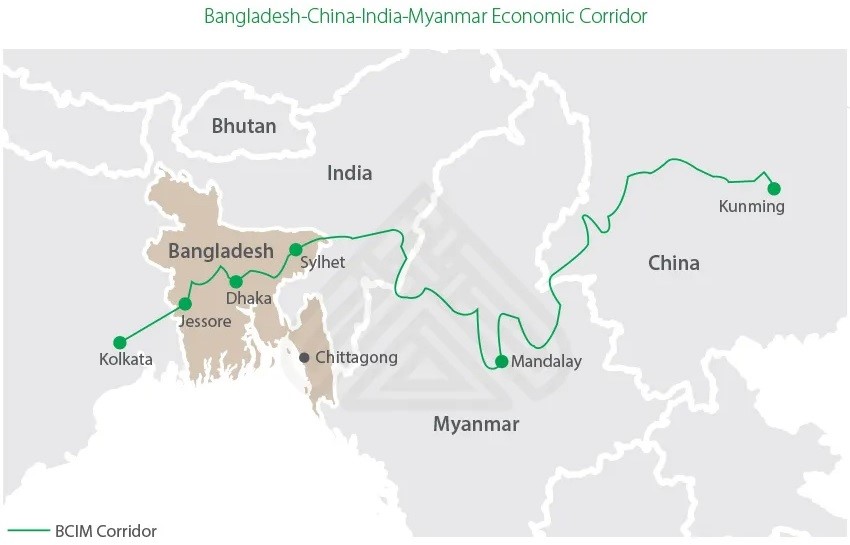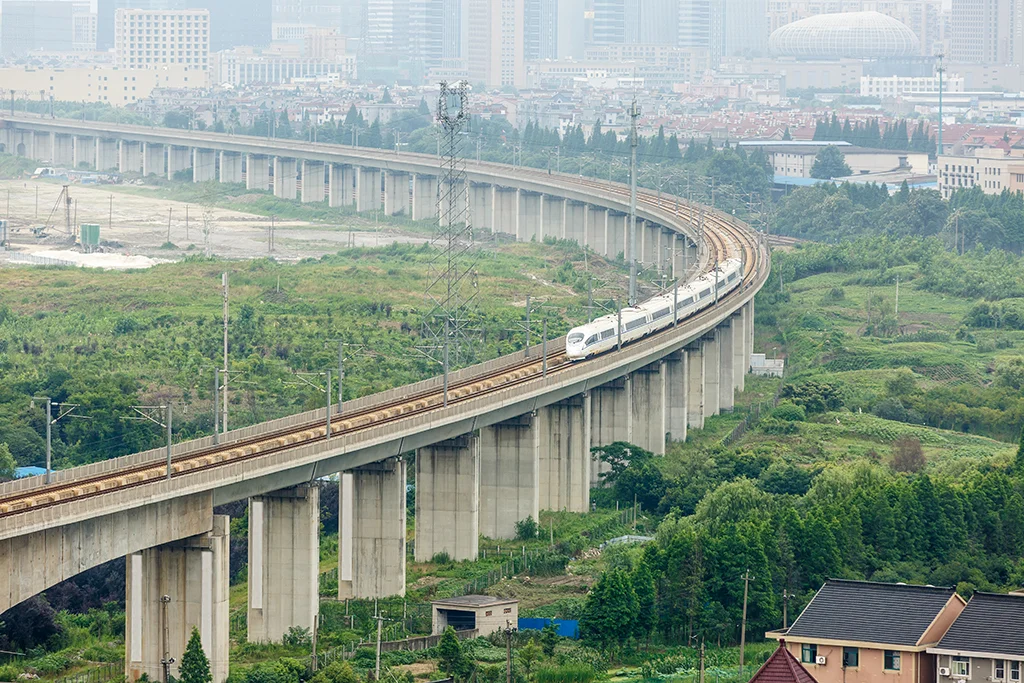In December 2013, Chinese President Xi Jinping announced the Belt and Road Initiative, which consists of land and maritime (blue) economic corridors extending to Europe and Africa. Today, about 145 countries are involved in the Belt and Road Initiative, which is primarily composed of large development projects meeting the infrastructure investment needs of states in the energy, industry, trade, and transportation sectors.
The Belt and Road Initiative’s land corridors consist of six main routes. One of these is the Bangladesh-China-India-Myanmar Economic Corridor (BCIMEC). This route starts from China, extends to Myanmar, from there to the northeastern states of India and Bangladesh, and then reaches Calcutta in the Bengal State of India. It is then planned to connect to the blue economy corridor from the Port of Calcutta and reach the ports of Hambontata and Colombo in Sri Lanka. In short, China’s ultimate goal is to connect its land corridor extending towards India to the blue economy corridor passing through Sri Lanka.
Figure 1. Bangladesh-China-India-Myanmar Economic Corridor

Source: “India Becomes Transportation Hub Of China’s Belt & Road Initiative As Co-Investments Increase”, Silkroadbriefing, https://www.silkroadbriefing.com/news/2020/06/25/india-becomes-transportation-hub-chinas-belt-road-initiative-co-investments-increase/, (Accession Date: 08.03.2023).
China’s strategic goal in reaching out to South Asia is to reach the Indian Ocean. In this regard, the Beijing administration can connect to these seas through the shortest route, from Myanmar’s Kyaukpyu Port, India’s Kolkata Port, and Pakistan’s Gwadar Port. These ports are also the ultimate destinations of three different land corridors extending from China to Myanmar, India, and Pakistan respectively. One of China’s strategic goals is to connect the corridor going to Myanmar-Bangladesh-India with the economic corridor in Pakistan (CPEC). However, India opposes the development of the CPEC passing through Kashmir. Because of this opposition, China is having difficulty including India in the Belt and Road Initiative.
The problems China encounters in this project are not limited to India. Security problems in Myanmar have also contributed to the failure of the aforementioned corridor. In addition, Myanmar has political problems with Bangladesh due to the Rohingya issue. Also, because of the Kokang separatists at the border, Myanmar has had disagreements with China for many years. Moreover, the most recent political, economic, and social crisis in Sri Lanka has made it difficult to implement this corridor.
From India’s perspective, these economic corridors extending to Pakistan and Myanmar by China aim to surround it. China’s project passes through Azad Kashmir controlled by Pakistan. This is a disputed region where both India and Pakistan have claimed sovereignty for many years and have fought each other over the issue. China claims that the aforementioned corridor does not create any sovereignty violation. However, India argues that this corridor, which passes through Kashmir, is equivalent to legitimizing Pakistan’s sovereignty there and therefore opposes it. Because of the fear of encirclement and the Kashmir issue, India did not participate in the Belt and Road Initiative Summits held in 2017 and 2019. Despite this, China emphasizes that India is still a part of the Belt and Road Initiative.[1]
The corridor in question offers great opportunities to the member countries in the context of resolving bilateral and multilateral disputes among states, achieving economic development and integration. China, where the productive population is gradually decreasing, aims to revive its corridors opening to South Asia in order to ensure sustainable economic development. This corridor is also valuable in terms of meeting China’s growing energy needs. Indeed, the northeastern states of India and Bangladesh, along with Myanmar, host significant hydrocarbon resources. Through this corridor, China aims to reduce its dependence on the Malacca Strait, especially in terms of crude oil imports, and to ensure energy security by bypassing it if possible.
Due to the above factors, China is striving to keep its relations with India positive. However, after the border clashes in 2020, mistrust has increased between the parties. It’s not easy to reverse this in the current conjuncture. China’s increased support for the corridor extending to Pakistan is also raising India’s concerns. Indeed, New Delhi opposes third countries investing in the mentioned corridor. Nevertheless, China’s plan to merge the corridor extending to India with Pakistan is still in place. However, it does not seem likely that this plan will be reciprocated at least in the current conjuncture.
Especially due to its opposition to CPEC, India, which did not participate in the Belt and Road Initiative Summits, is cooperating with Japan and other American ally countries in the region, which it believes could counterbalance China. In addition, the New Delhi administration is striving to implement the International North-South Transport Corridor together with Russia and Iran. Moreover, under the “Act East” policy, India aims to revive the economic corridor extending to Myanmar and from there to the Indochina Peninsula and Japan.
As a result, also as a consequence of the polarization in the international arena, India has reduced its support for China’s Belt and Road Initiative. However, it cannot be said that this plan has been completely abandoned. If an end can be put to border conflicts and political tensions, it might be possible for China to revive its economic cooperation with India.
[1] “Bangladesh-China-India-Myanmar-Economic Corridor Project Not Abandoned, Says China”, The Print, https://theprint.in/world/bangladesh-china-india-myanmar-economic-corridor-project-not-abandoned-says-china/248341/, (Date of Accession: 10.07.2019).

